A soldier on a scooter, or two-wheeled infantry
During the Soviet era, newspapers had a popular column called “A Letter Called Me to the Road.” A journalist would go to the provinces to write a report in response to a reader’s letter. I remembered this column when I was looking at a postcard from the First World War, showing brave German cyclists in military uniform racing through the streets of war-torn Eydtkuhnen. I wanted to know more about this two-wheeled infantry or cavalry… Especially since for me, a bicycle is not an empty phrase. In short, as they say, a postcard called me to the road. Let’s go!
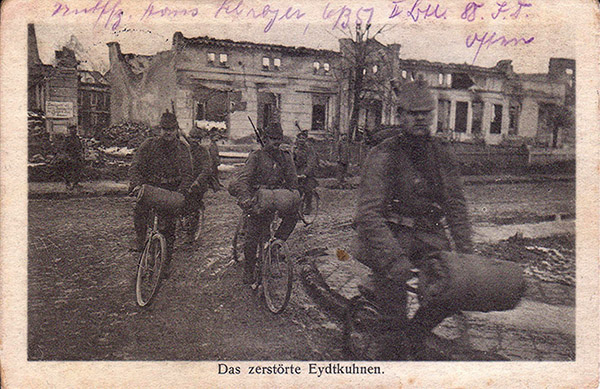
Scooter units (bicycle infantry, bicycle infantry, Radfahrtruppen, infanterie cycliste) emerged in the armies of European countries and the United States in the late 1880s, with the advent of the so-called "safety bicycle", which replaced the penny-farthing bicycle. Here is what was reported about the safety bicycle in the Brockhaus and Efron Encyclopedia: "Complete safety from falling head first is provided by B.<bicycles> with two wheels of equal size and a saddle between them. A light B.<bicycle> of this type was called a "Bicicleta". But more solid military and hunting B.<bicycles> are also designed on the same principle, allowing you to carry a gun, knapsack and other baggage."
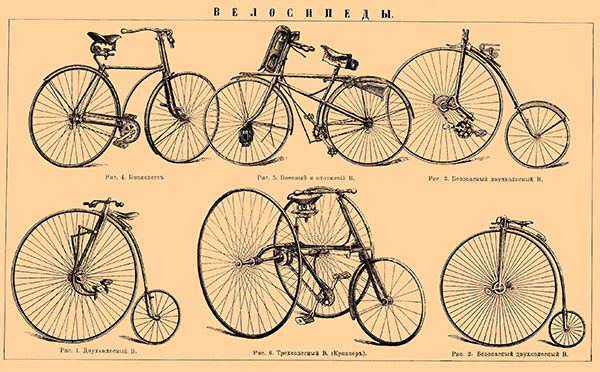
And further:
"The bicycle can also have a wide application for military purposes and, replacing mounted orderlies and messengers, allows for greater speed of movement and does not require the feed necessary for a horse. This circumstance is especially important for fortresses, in which they generally avoid having cavalry, which requires large reserves of forage. The use of the bicycle in fortresses is also favored by the fact that the entire internal space of the latter is crossed by a network of excellent highways connecting individual fortifications significantly distant from each other. Although there are telegraphs and telephones in fortresses, these can be damaged and, in any case, do not provide complete freedom in using them where and in those directions where necessary, which can be provided by a cyclist orderly.
During military operations in the field, where telegraphs and telephones may be absent, a bicycle can compete in speed with a mounted one, on a good road, and in addition, under fire a bicycle is in less danger of being hit than a mounted one, since it presents a comparatively very small target. The best military cyclists consider the most suitable bicycles to be light on the move, durable, simple, possibly not heavy, and of acceptable cost."
The order to create scooter units in the Russian Imperial Army was signed in June 1891. A year later, a special uniform was approved for the lower ranks of scooter riders, consisting of "a shirt (gymnastyorka) with a stand-up collar and sleeves with cuffs, a short raincoat made of waterproof material, trousers of the same color as the gymnastyorka, tucked into high boots, and a cap. To deliver documentation, the scooter rider had a bag for packages, which was placed on his chest."
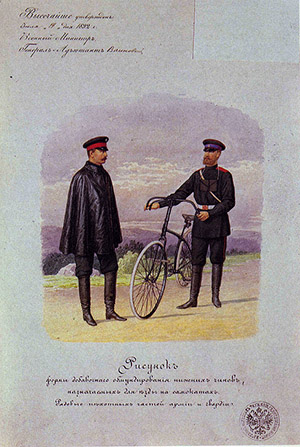
The first separate scooter team in our army was formed in 1897. Russian scooter riders used bicycles from various foreign and domestic companies.
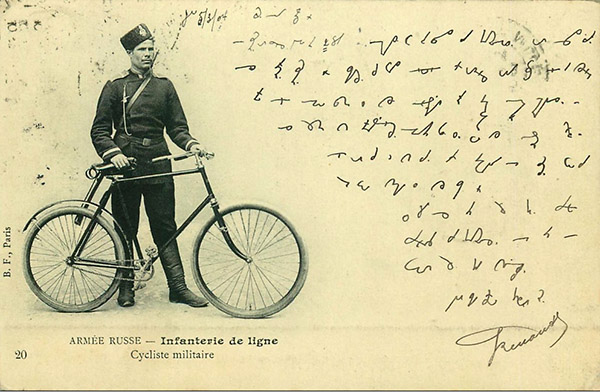
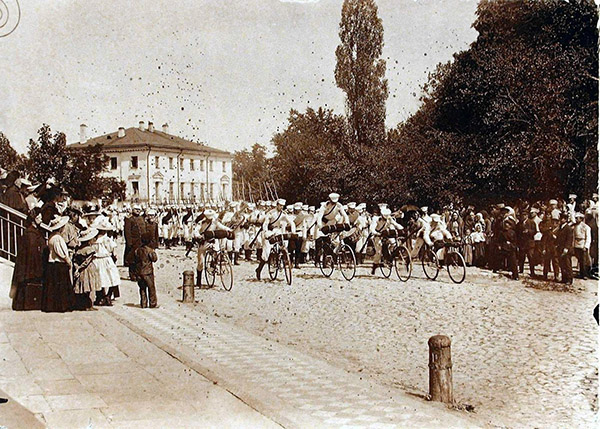
The scooter units of the Russian army did not make a noticeable appearance during the First World War. The soldiers of the reserve scooter battalion, stationed on Zolotorozhskaya Street in Lefortovo, fought on the side of the Bolsheviks during the October events of 1917 and on October 25-26 they entered into battle with the cadets in the center of Moscow. Three scooter riders who died during those days are buried near the Kremlin wall. Samokatnaya Street, which was called Novoblagoslovennaya until 1924, is named in their honor. The Red Army also had bicycle units, but I have not come across any information about their combat operations during the Second World War. Obviously, the number of such units was small, unlike, say, the Reichswehr (and later the Wehrmacht) or the Italian, Finnish or British armies.
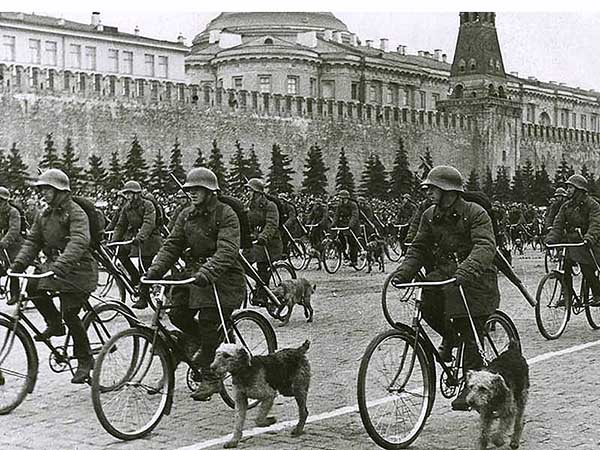
But let's return to the origins of the appearance of scooter parts.
Although there are opinions about the use of bicycles for military purposes as early as the Franco-Prussian War (1870-71), the specifics of their design at that time deprive these assertions of any basis. In 1875, the Italians used cyclists during military maneuvers to deliver orders. The same was done ten years later by the British. But the first use of bicycles to solve real military problems dates back to 1898. Then, after the end of the Spanish-American War, a hundred American soldiers under the command of Lieutenant James Moss, using bicycles, dispersed protesters on the streets of Havana. Initially met with whistles and jeers from the crowd, the cyclists quickly took key positions, built a kind of barricade from bicycles, and quickly restored order on the streets of the city. During the Second Anglo-Boer War (1899-1902), the opposing sides already used bicycles directly in combat.
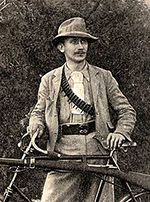
A supporter of the use of bicycles in the Boer army was Danny Theron, a legendary Boer scout and, incidentally, the great-grandfather of actress Charlize Theron. Even before the start of hostilities, he approached the leadership of the Transvaal Republic with a proposal to create mobile units of cyclist scouts. As arguments, Theron cited the fact that horses are needed in real battles, and they also need rest and food. A bicycle, unlike a horse, only needs a pump to inflate tires and a little machine oil to lubricate the chain. In addition, a bicycle does not bite or kick. It was decided to arrange a competition between a rider and a cyclist. Each of them had to cover a distance of 46 miles (75 km) between Pretoria and the bridge over the Crocodile River. The cyclist, as you might guess, arrived first and Dani Theron became the commander of an elite unit of Boer cyclists named after himself - Theron se Verkenningskorps (TVK) - "Theron's Scouting Unit". The unit consisted of 108 young educated Boers from wealthy families, who were armed, in addition to bicycles with a pump, with shorts and revolvers, and in exceptional cases, light carbines. The unit was divided into seven divisions led by lieutenants reporting to Captain Theron. The winner of the race, a cyclist named Jooste, became a member of this unit and also proved himself to be an excellent scout. Jooste also came up with the idea of using strips of genuine leather in bicycle tires between the tire and the inner tube to avoid punctures.
On the British side, support for the bicycle as a means of warfare was provided by Colonel George Knox. Even before the war began, he proposed using bicycles for the physical training of soldiers at the Aldershot training camp. Thanks to his efforts, by the time the Boer War began, the British had several trained cyclist units sent to South Africa. There they were joined by local cyclist units, including a unit called the Rand Rifles, and several others, some of which numbered hundreds of fighters. At one stage in the war, approximately three percent of the British army were cyclists. The main task of the British cyclists was to act as orderlies. British unit commanders usually had two cyclist orderlies who carried various orders between units. The cyclists often served as a link between cavalry and infantry units. They were used to reconnoiter the area before setting up bivouacs, and even transported the sick to medical units.
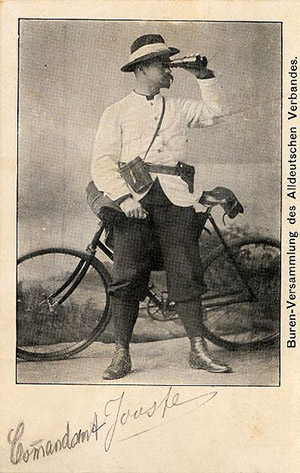
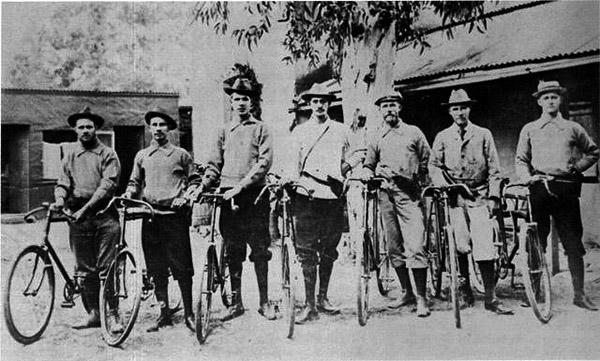
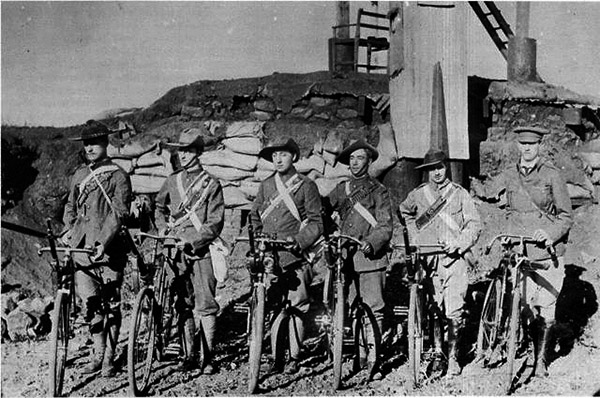
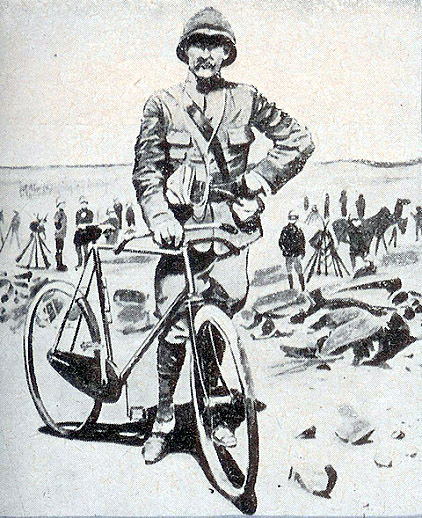
The initial skepticism towards the scooter riders, shown by both the command and the local population, soon gave way to admiration due to the desperate courage and resourcefulness of the two-wheeled riders. Danny Theron became a legend during his lifetime; his portraits, like those of Joost, were printed on postcards (although Theron most often used a horse in his operations, and a bicycle only in cases where maximum secrecy was required). The attitude of the British towards their scooter riders was much more benevolent from the very beginning. Although it should be recognized that, based on the results of the war, they decided to use scooter riders only for auxiliary operations not related to direct combat. Thus, South Africa became a testing ground for scooter units. Many countries, having analyzed the experience of the Anglo-Boer War, formed scooter units in their own armies.
By 1900, Belgium, Germany, France, Italy, Russia, Japan and Switzerland already had folding bicycles in service. Their main advantage was their relative compactness, which allowed the scooter rider to carry the folded bicycle on special straps behind his back.
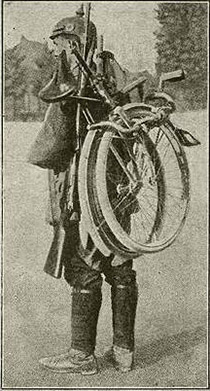
You can find claims that the first folding bicycle was invented by the French captain Gerard. This is not entirely true. In addition to the fact that the first patents for the invention of folding bicycles (particularly in the USA) were issued in 1888 (inventor Emmit G. Latta) and 1894 (inventor Michael B. Ryan), there is a certain intrigue in the story of Gerard's invention. Back in 1892, the wealthy French industrialist Charles Morel, seeing the unprecedented growth in popularity of bicycles, designed a prototype of a folding bicycle. Independently of him, in 1893, French lieutenant Henry Gérard submitted a project of a folding bicycle for consideration by his army leadership, and on June 27 of the same year, he filed an application for a patent. But the fact is that Gerard's model was basically inoperative. While trying to improve and refine it, Gérard met Morel, who showed Gérard his prototype of a folding bicycle and recommended a mechanic to eliminate the technical deficiencies in Gérard's model. Together, the technical deficiencies were eliminated. In October 1894, Gérard and Morel agreed to manufacture and sell a folding bicycle, with Morel undertaking to finance the entire project. The first folding bicycles of Gérard's system appeared in April 1895 and immediately began to sell successfully. Production could not keep up with the incoming orders. In October, retail sales of the bicycle began in a newly opened store in Paris. Gérard agreed to supply the army with 25 trial copies of his bicycle. Ultimately, the idea of equipping the French army with folding bicycles received support. Moreover, army officials from Russia and Romania showed interest in Gérard's model, placing orders for their delivery. Gerard was promoted to captain and put in charge of forming a regiment that would use the bicycles he had invented.
But as we know, there is a limit to all good things... Soon, Gerard sued Morel, believing that his share of the profits from bicycle sales was too large. The partners finally fell out, the enterprise they founded fell apart, the bicycle patents were sold to a consortium of Peugeot and Michelin, which continued to produce bicycles for the armies of France and other countries. Gerard's folding bicycle appeared in the Peugeot product catalog as early as 1899.
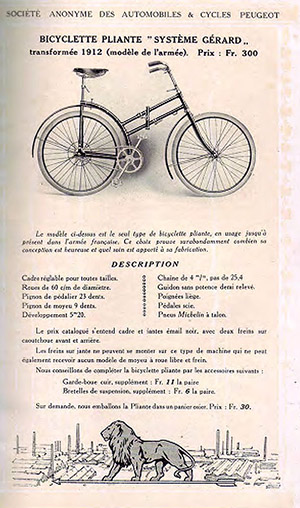
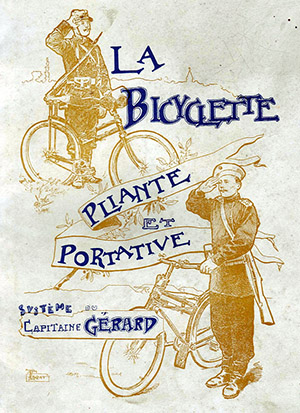
Therefore, the model called "Captain Gerard's folding bicycle" was not, firstly, the first folding bicycle, and secondly, Gerard was not its sole inventor. In particular, the patent for this bicycle, issued in 1896 in England, lists both Gerard and Morel as inventors. It is simply that "Captain Gerard's" bicycle became the first commercially successful folding bicycle produced in significant quantities.
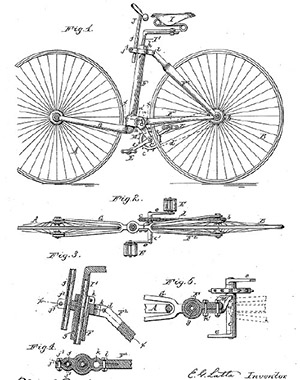
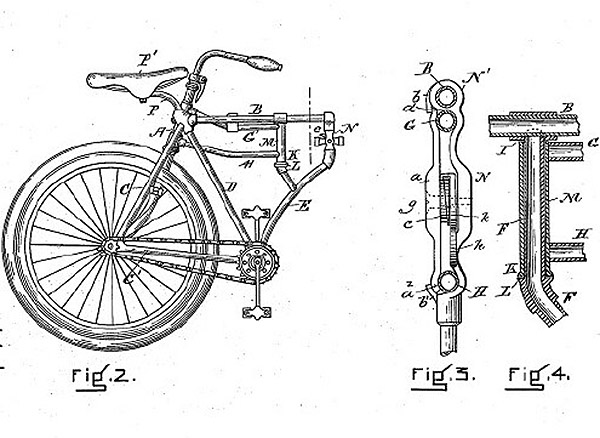



During the First World War, the armies of the participating countries used scooter units in conjunction with cavalry units and in secondary operations. No significant combat missions were set for scooter riders, although the Germans, French and Austrians periodically used these units in battle.
Continued: "Military Cyclists"
Sources:
Wikipedia
Rumyantsev E.A. Handbook on the organization and composition of the German army after the mobilization in August 1914.
Kohn RS Bicycle troops. — Booklife, 2011.
DR Maree Bicycles in the Anglo-Boer War of 1899-1902. Military History Journal of The South African Military History Society, vol. 4 No. 1 — June 1977.
www.kaiserscross.com
www.foldingcyclist.com
bsamuseum.wordpress.com
www.oldbike.eu
www.veliciousbicycles.com
oldbike.wordpress.com
bcoy1cpb.pacdat.net
www.awm.gov.au
www.vintagecolumbiabikes.com
www.starerowery.org
nowahistoria.interia.pl
